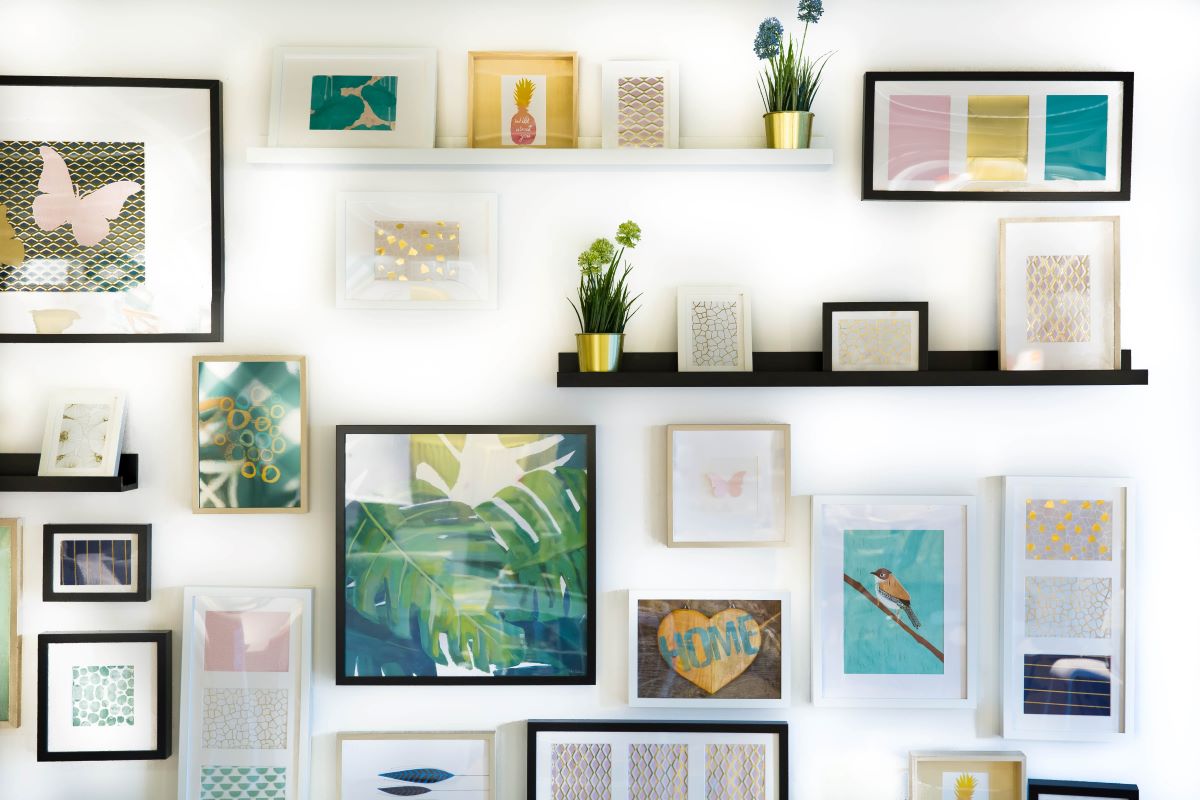 6/26/2025
6/26/2025
by Michael McCarty
Owner, Tribeca Printworks
How to Pick the Right Frame for Your Picture
How you choose a picture frame will depend on different factors, from the style of your picture to the space surrounding it. The right selection will add depth and character to the piece and complement its unique qualities.
Considering the Style of Your Picture or Artwork
The first step is to analyze your picture or artwork, noticing the colors, textures and overall look of the piece. Select a frame that harmonizes with the piece instead of drawing attention from or muting it. You can either create contrast with your material and color choices or choose an option that blends in with the picture’s style.
Choosing the Right Frame Material
Frame material also plays a key role in reflecting the mood of the artwork. For a formal and minimalistic concept, you can choose a simple and elegant acrylic face mount effect. On the other hand, a light, wooden frame is perfect to give a cozy, rustic look to your family portraits.
Finding the Right Frame Color
If you want to choose the right frame color for art and pictures, you can opt for a wall gallery with the same frame colors, match the tones in the image or blend in with the room decor.
Frames don’t need to match the exact color of your artwork. You can use the color wheel to choose a complementary tone to prevent clashing. You can go for subtle shades or choose tones that highlight your piece.
Selecting the Right Frame Thickness
Frame thickness can balance the visual weight of an artwork or photograph. Proportionality, visual weight and symmetry are crucial for choosing the thickness that complements a piece without overpowering it. Thin frames create a sleek, modern look, while thicker options create a dramatic effect.
Should You Use a Mat?
Mats are a border material between the piece and the frame, creating a visual separation that can serve as aesthetic balance. Picture frame mats enhance colors, shapes and details in the artwork or pictures, eliminating distractions and allowing you to appreciate every detail of the display.
Common mat sizes include 20 by 24 inches and 22 by 26 inches. However, mat sizes are based on frame size and the artwork or picture on display. You can also customize mat colors and match them to enhance the artwork.
Some mat effects include:
- Single matting: A single layer of mat provides a professional and classic look.
- Double matting: You can use two layers of mat boards to add depth and create a tiered look.
- Floating matting: This effect is created with a larger mat window, allowing the edges of the artwork to be visible and creating a frame within a frame.
Frame Glass Options
Your selection of glass does more than protect a photograph or artwork — it can also impact the viewing experience. Common frame glass options include:
- Standard glass: This type is made from general-purpose material and recommended for places with no direct sunlight or high levels of glare.
- UV-protected glass: UV light rays contribute to fading and deterioration of prints. This type of glass is treated to protect pieces from deterioration.
- Non-glare glass: This glass has a matte-like finish that minimizes light reflection. You can showcase the piece without any lighting restrictions.
- Acrylic finishes: This finishing is a cost-effective alternative that minimizes concerns about weight, size or breakage for larger pieces.
Choosing a Frame Based on Placement and Decor
Whether you’ll be hanging your artwork or photos in a gallery art show or on a gallery wall at home, it’s crucial to consider the space around your artwork to pick a frame color, size, thickness and material.
Matching Frames to Your Home or Office
Observe the decor and theme of your space. For modern interiors, you can opt for thin, black wood frames or floating frames. If you have a more vintage setting, a traditional wood frame on warm or light colors is an excellent choice. You can tell how to pick a frame color considering the existing color schemes of the furniture and other elements.
Hanging vs. Tabletop Frames
Tabletop frames are ideal for adding a personal touch to small spaces, such as nightstands or shelves, while wall-mounted frames are better for larger spaces and creating focal points on empty walls.
One of the benefits of hanging frames is flexibility. You can hang a single distinctive artwork or create a gallery wall, mixing and matching frame styles. Some tips for creating your own gallery wall are:
- Choose a cohesive color palette to unify the look
- Use layout tools or apps to decide the best placement
- Select a wall with minimal distractions to use as a canvas
- Mix different art mediums and frame styles to add depth and interest
Trust Tribeca Printworks for the Perfect Frame
Tribeca Printworks can help you find the ideal frame for your picture or artwork. We are print and framing professionals and offer a wide variety of materials, colors and glasses of the best quality. Our custom framing services provide personalized solutions, from elevated home and commercial decor to fine art gallery exhibitions.
We offer free consultations to help you pick the best frame based on your unique needs. You can visit our custom frame shop in NYC or place an online order. Our software will suggest the right frame and moulding combinations.
Get the Ideal Frame Today
Tribeca Printworks offers you handmade custom art frames made from the finest materials. Contact our team online today for more information about our services and products.

